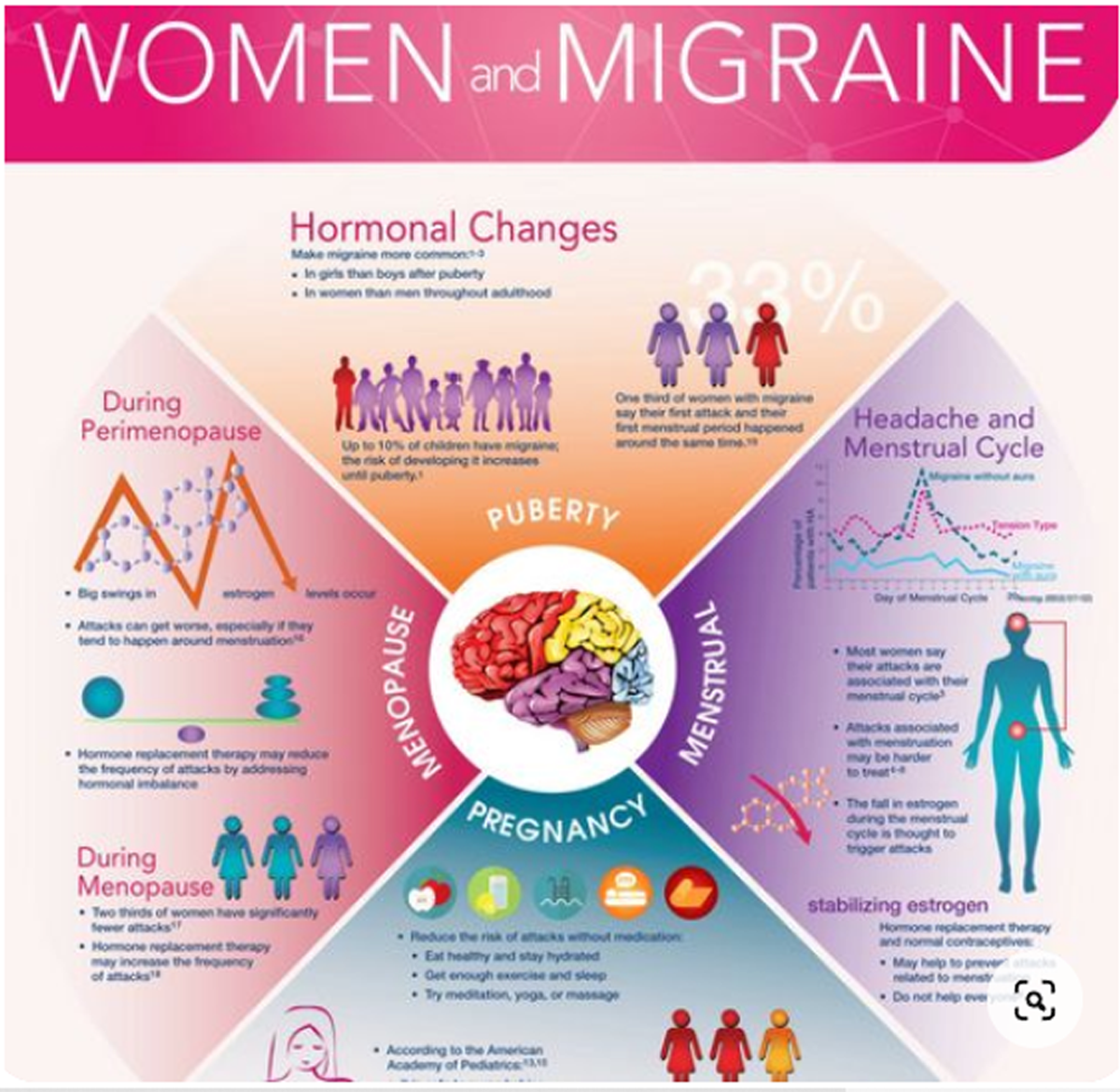Global, Regional, and National Burden of Migraine and Tension-type Headache, 1990-2016: A Systematic Analysis for the Global Burden of Disease Study 2016
SOURCE: Lancet Neurol. 2018 (Nov); 17 (11): 954–976
GBD 2016 Headache Collaborators
Prof Lars Jacob Stovner,
Department of Neuromedicine and Movement Science,
Norwegian University of Science and Technology,
Trondheim N-7491, Norway
BACKGROUND: Through the Global Burden of Diseases, Injuries, and Risk Factors (GBD) studies, headache has emerged as a major global public health concern. We aimed to use data from the GBD 2016 study to provide new estimates for prevalence and years of life lived with disability (YLDs) for migraine and tension-type headache and to present the methods and results in an accessible way for clinicians and researchers of headache disorders.
METHODS: Data were derived from population-based cross-sectional surveys on migraine and tension-type headache. Prevalence for each sex and 5–year age group interval (ie, age 5 years to ≥95 years) at different time points from 1990 and 2016 in all countries and GBD regions were estimated using a Bayesian meta-regression model. Disease burden measured in YLDs was calculated from prevalence and average time spent with headache multiplied by disability weights (a measure of the relative severity of the disabling consequence of a disease). The burden stemming from medication overuse headache, which was included in earlier iterations of GBD as a separate cause, was subsumed as a sequela of either migraine or tension-type headache. Because no deaths were assigned to headaches as the underlying cause, YLDs equate to disability-adjusted life-years (DALYs). We also analysed results on the basis of the Socio-demographic Index (SDI), a compound measure of income per capita, education, and fertility.
FINDINGS: Almost three billion individuals were estimated to have a migraine or tension-type headache in 2016: 1·89 billion (95% uncertainty interval [UI] 1·71–2·10) with tension-type headache and 1·04 billion (95% UI 1·00–1·09) with migraine. However, because migraine had a much higher disability weight than tension-type headache, migraine caused 45·1 million (95% UI 29·0–62·8) and tension-type headache only 7·2 million (95% UI 4·6–10·5) years lived with disability (YLDs) globally in 2016. The headaches were most burdensome in women between ages 15 and 49 years, with migraine causing 20·3 million (95% UI 12·9–28·5) and tension-type headache 2·9 million (95% UI 1·8–4·2) YLDs in 2016, which was 11·2% of all YLDs in this age group and sex. Age-standardised DALYs for each headache type showed a small increase as SDI increased.
There are more articles like this @ our:
INTERPRETATION: Although current estimates are based on limited data, our study shows that headache disorders, and migraine in particular, are important causes of disability worldwide, and deserve greater attention in health policy debates and research resource allocation. Future iterations of this study, based on sources from additional countries and with less methodological heterogeneity, should help to provide stronger evidence of the need for action.
FUNDING: Bill & Melinda Gates Foundation.
From the FULL TEXT Article:
Introduction
Migraine and other headache disorders are among the most prevalent disorders worldwide, [1] but recognition of their importance for public health has come only since 2000. This delay has occurred in part because headache is not fatal and does not result in permanent or objective disability, and in part because headaches are experienced by most people from time to time, which has hindered the realisation that headache disorders are debilitating for a relatively large minority of the people who are affected.
The Global Burden of Diseases, Injuries, and Risk Factors (GBD) studies have as one of their main aims the evaluation not only of mortality but also of non-fatal health outcomes. GBD offers a method of quantifying health loss in time units, enabling comparisons over time and across conditions, cultures, and countries, and, from 2016, at subnational levels in some countries. GBD has become an important tool for priority setting and planning of health services by international health organisations and governments.
Migraine was not included in GBD 1990, but was added in GBD 2000. In GBD 2010, tension-type headache was added and in GBD 2013, medication overuse headache was included. In GBD 2000, migraine was ranked as the 19th cause of disability globally. [2] For the GBD 2000 study, data were absent for more than half of the world’s population. When new data came from big countries like Russia, China, India, and some parts of Africa, and with tension-type headache and medication overuse headache also taken into account, headache disorders were collectively the third cause of disability in people under 50 years of age in GBD 2015. [3] Since GBD 2010, prevalence and burden of disability have been re-estimated for the full time period from 1990 until the most recent year for which data are available, each time incorporating new data sources and any updates to methods.
| Research in context Evidence before this study
Since 2000, the Global Burden of Diseases, Injuries, and Risk Factors (GBD) studies have produced estimates of prevalence and burden of migraine. Since GBD 2010, tension-type headache and medication overuse headache have been added and estimates have been made by country spanning the period from 1990 to the most recent year for which data are available. Headache disorders, and in particular, migraine, have been found to be highly prevalent and a cause of large burden. To date, no research article has focused on the detailed methods and results of headache estimates from GBD. With the present study, we updated a previous systematic review covering 1980–2001 by doing a review that searched PubMed for articles using the terms “migraine”, “tension”, “headache”, “medication”, and “epidemiology” from Jan 1, 2001, until Dec 31, 2015. There were no language restrictions. Added value of this study In 2016, of all GBD causes of disease, tension-type headache was the third most prevalent, and migraine the sixth. In terms of years of life lived with disability, migraine ranked second globally, and was among the ten most disabling disorders in each of the 21 GBD regions. It was particularly burdensome among young and middle-aged women. Unlike many other diseases and injuries quantified in GBD studies, headache showed no clear relation to sociodemographic development, as measured by the Socio-demographic Index. No risk factors have yet been established in the GBD studies for headache disorders, and headache epidemiological studies are absent in many countries and regions. Implications of all the available evidence Through the GBD studies, headache disorders, and in particular, migraine, have been shown to be among the most disabling disorders worldwide. Many fatal and disabling disorders decrease with socioeconomic development, but this does not seem to be true for migraine and tension-type headache. Hence, their relative importance is likely to increase in the future. More high-quality headache epidemiological studies and studies aiming to identify modifiable risk factors should be done. Effective strategies to modify the course of headaches and alleviate pain exist, but many people affected by headache are not benefiting from this knowledge. |






Leave A Comment